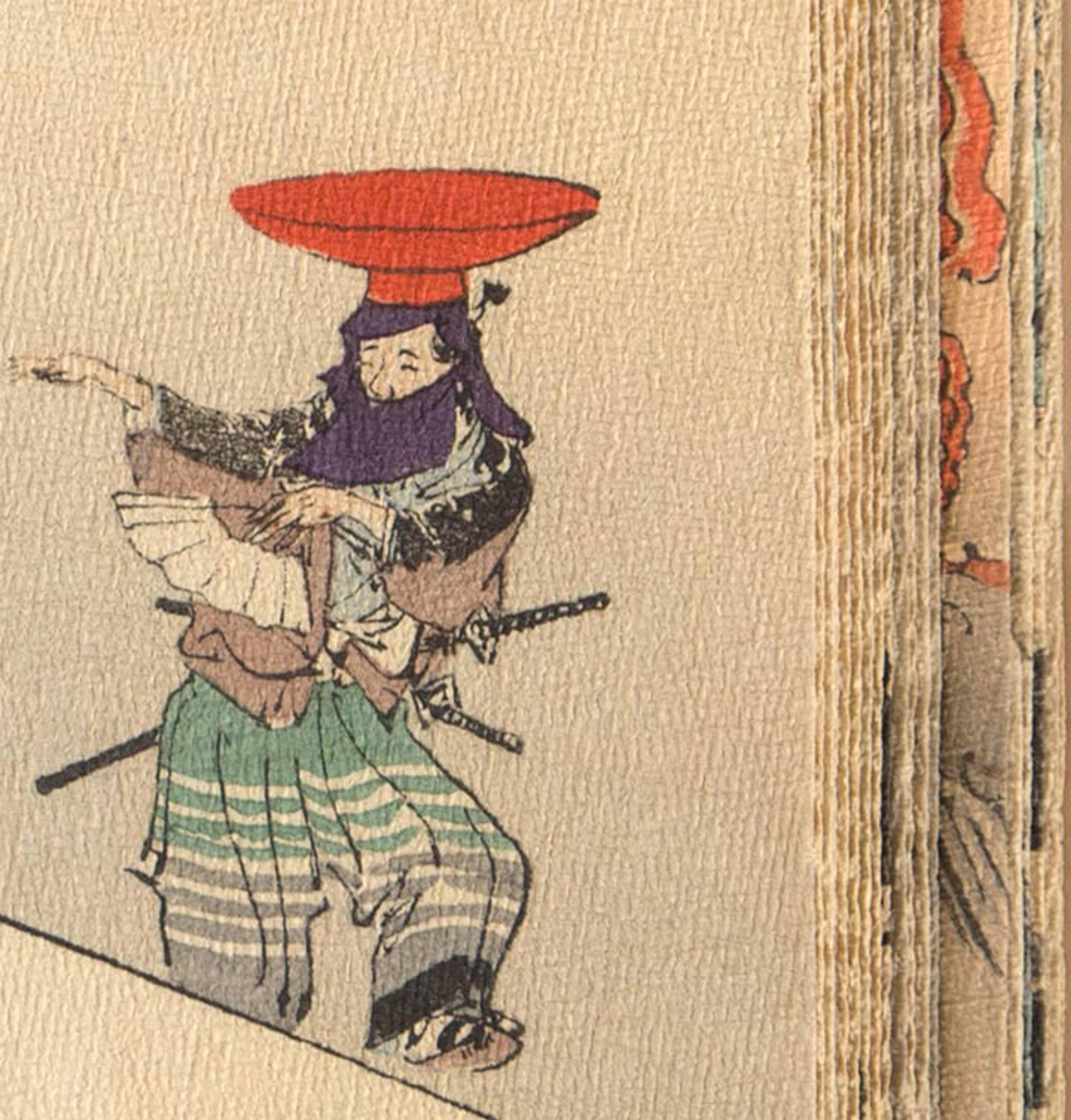
Florenz, Karl. Poetical Greetings from the Far East: Japanese Poems. Tokyo: T. Hasegawa, 1897.
A few weeks ago, I spotted the title Momotaro on the shelves of Watson's Special Collections. Curious, I took it off the shelf, as Momotaro is a well-known children's fairy tale in Japan. The illustrations were typical of the way the familiar story is generally presented, and the text was in English. As I turned the pages, though, I began to notice that the paper itself was unusual; it felt like cloth. I had never seen a book like this before. What was it?

Momotaro, or, Little Peachling. Tokyo: Kōbunsha, Meiji 18, 1885.
Chirimen, or crepe, is a Japanese textile that has a fine, wrinkled texture. For centuries it has been used to make kimono, furoshiki (wrapping cloth), and many other decorative objects used in daily life. I recently learned of the genre of books made not with textile crepe but with crepe paper (chirimen-gami). Called Chirimen-bon (crepe-paper books), their covers and text pages are made entirely of crepe paper.
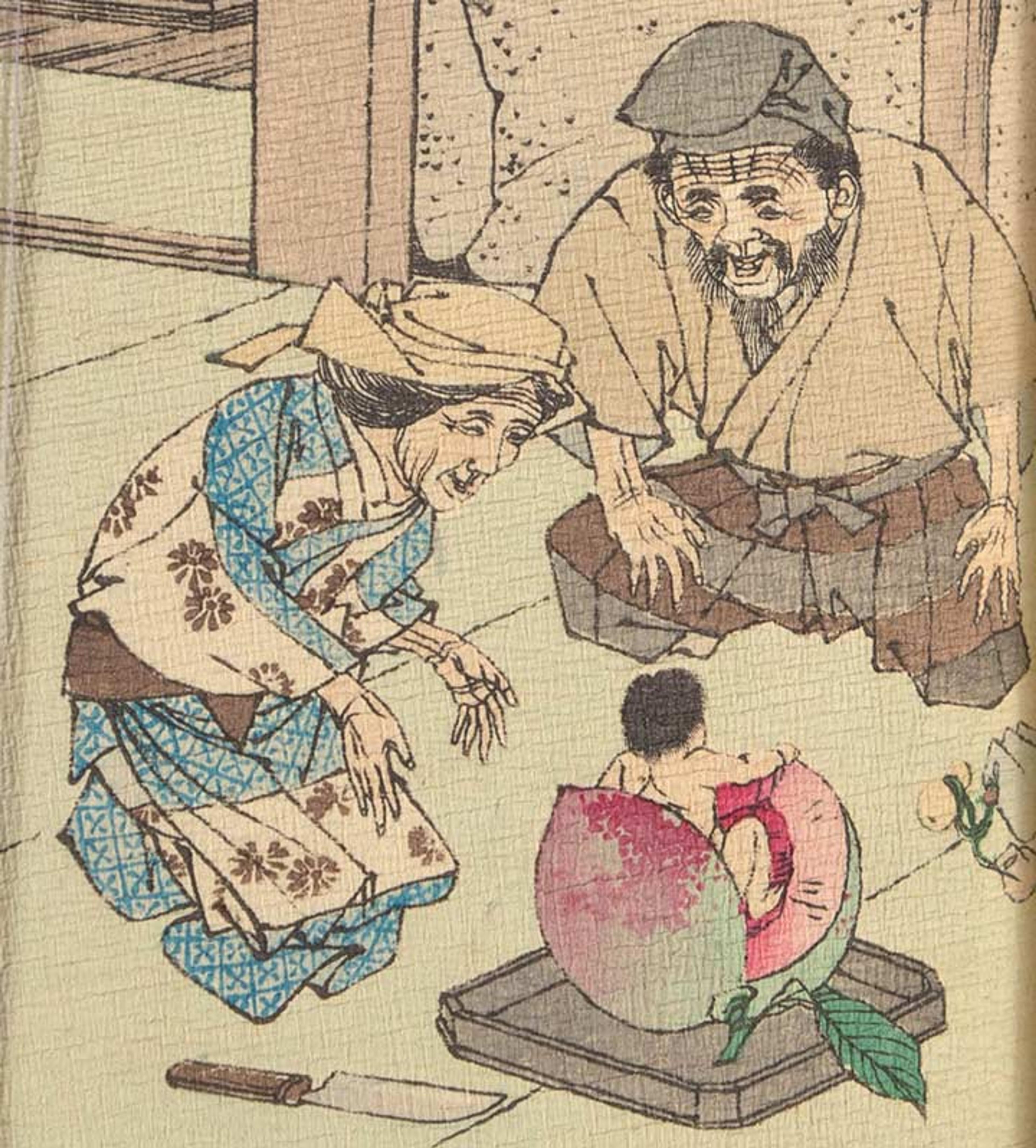
Momotaro, or, Little Peachling. Tokyo: Kōbunsha, Meiji 18, 1885.
Chirimen-bon were first produced by Takejiro Hasegawa, who began to publish them in 1886, not long after trade reopened between Japan and the West after almost 300 years of isolation. Japonisme was much enjoyed in Europe, and chirimen-e, or chirimen-ukiyoe—woodcut prints that are processed to add texture—were popular by that time. As the artist Archibald Standish Hartrick describes, Van Gogh was a great admirer of these:
On an easel was the yellow picture called 'Romans Parisiens,' the first of a series of yellow pictures. Then he drew my attention specially to a number of what he called 'crêpes,' i.e. Japanese prints printed on crinkled paper like crepe. It was clear they interested him greatly, and I am convinced from the way he talked, that what he was aiming at in his own painting was to get a similar effect of little cast shadows in oil paint from roughness of surface, and this he finally achieved.
–Archibald Standish Hartrick, A Painter's Pilgrimage through Fifty Years [Cambridge, England: The University Press, 1939], 46.
Hasegawa capitalized on this fascination by using the chirimen-e technique to make woodcut-print books that drape softly in the hands, just as though they were made from fabric. The stories were written not only in English, but in German, French, Spanish, and Portuguese. The subjects of the chirimen-bon were drawn mainly from Japanese folklore and were originally intended to be used in language education for young Japanese children during the country's first era of westernization. However, they quickly became favorite souvenirs among Western visitors who were exposed to Japanese culture on their travels. Later, chirimen-bon were even exported to Europe.
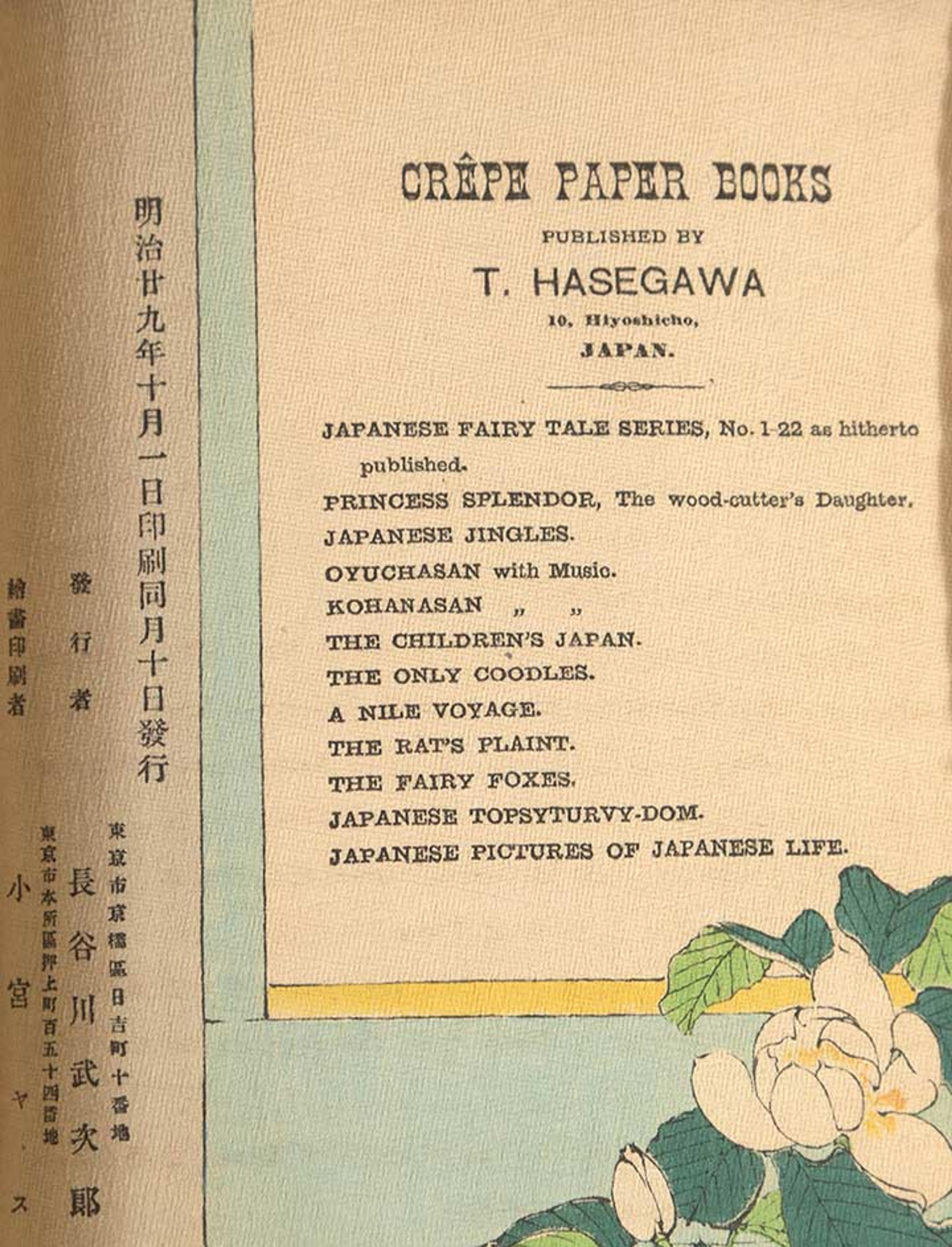
Florenz, Karl. Poetical Greetings from the Far East: Japanese Poems. Tokyo: T. Hasegawa, 1897.
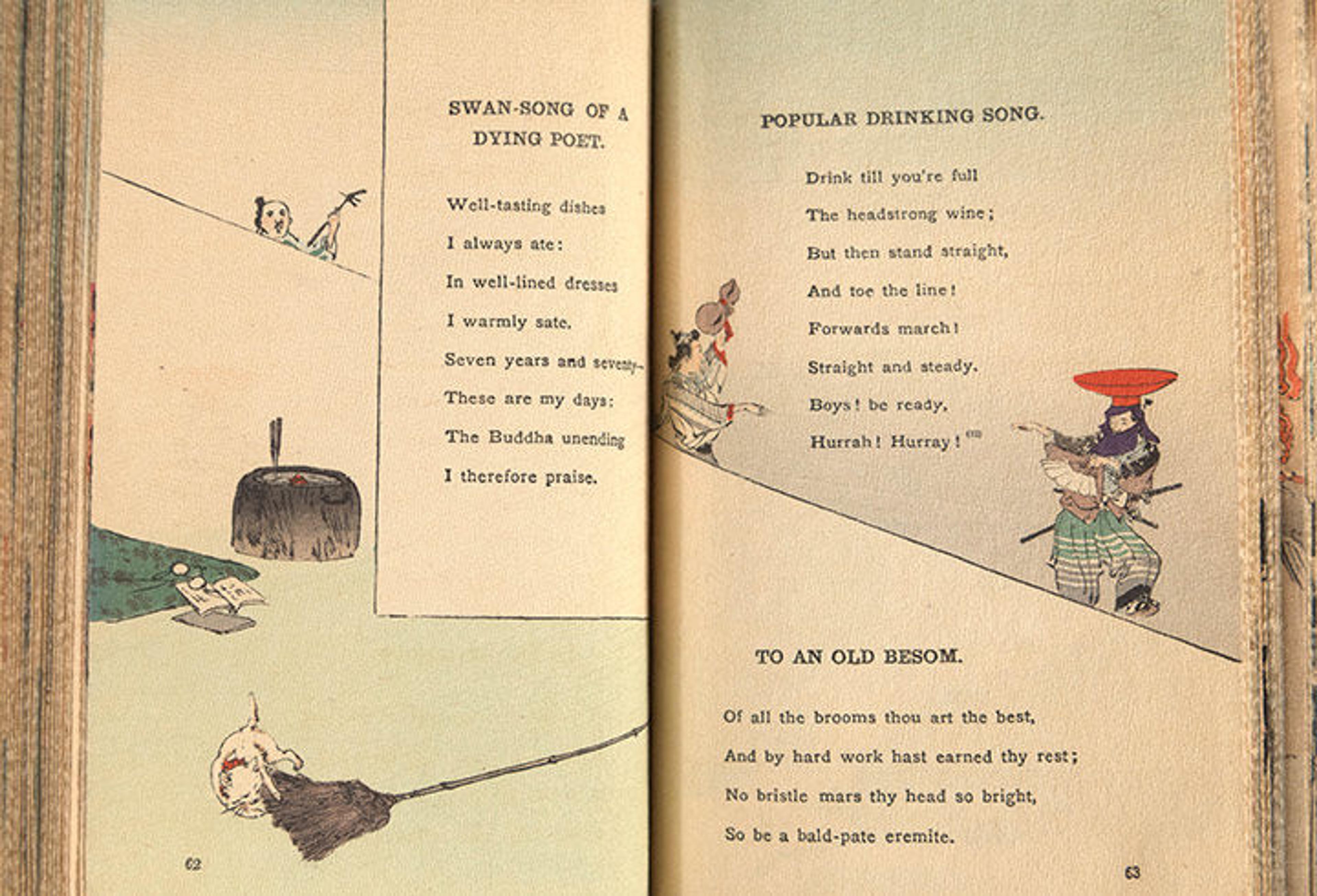
Florenz, Karl. Poetical Greetings from the Far East: Japanese Poems. Tokyo: T. Hasegawa, 1897.
Watson Library's Special Collections has two other chirimen-bon: Princess Splendor and Oyucha San. We also have two books about chirimen-bon. One is in English, by Frederic A. Sharf, titled Takejiro Hasegawa: Meiji Japan's Preeminent Publisher of Wood-Block-Illustrated Crepe-Paper Books. The image below shows the equipment used in the preparation of chirimen. If you are interested in learning more, the art conservation and preservation firm Gyoji Ooiri provides step-by-step illustrations showing how the equipment is used.

Sharf, Frederic A. Takejiro Hasegawa: Meiji Japan's Preeminent Publisher of Wood-Block-Illustrated Crepe-Paper Books. Salem, MA: Peabody Essex Museum, 1994.
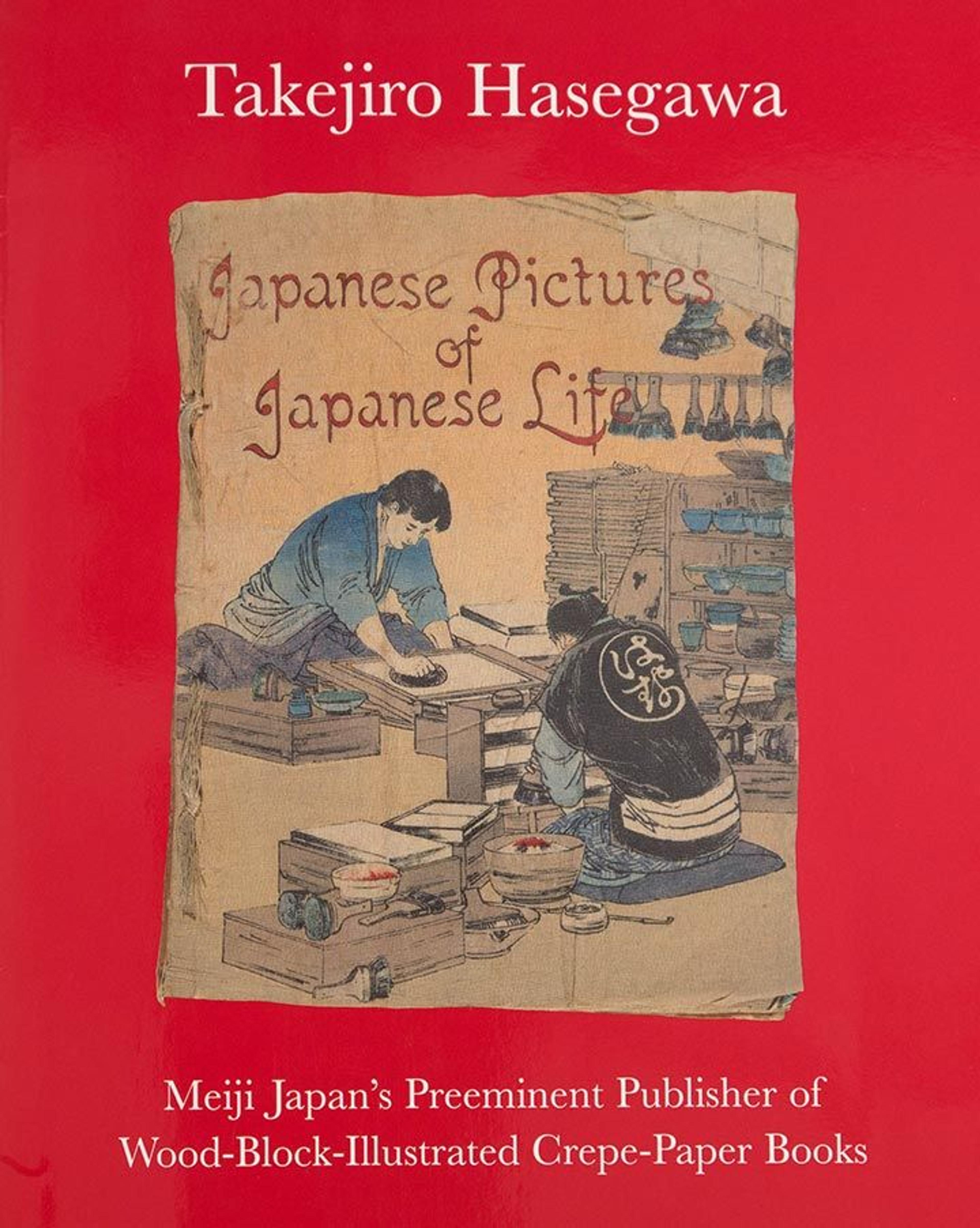
Sharf, Frederic A. Takejiro Hasegawa: Meiji Japan's Preeminent Publisher of Wood-Block-Illustrated Crepe-Paper Books. Salem, MA: Peabody Essex Museum, 1994.
Another book about chirimen-bon, this one in Japanese, is Meiji No Ōbun Sashiebon: Chirimenbon No Subete (ちりめん本のすべて 明治の欧文挿絵本). Recently, I came across a book that was published in Germany in 1932, and the material for its covers seems to have the similar texture of chirimen-gami. I wonder if the chirimen-bon inspired the artist of this book.
My "What is this?" adventure continues . . .

300 Jahre Buchdrucker in Glückstadt. Glückstadt: J.J. Augustin, 1932.
Related Content
In Circulation: "Decorated Paper Techniques: A Selection From Watson Library's Special Collections" (November 26, 2014)
In Circulation: "The Art of Japanese Books" (October 22, 2014)